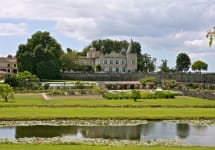Chateau Lafite Rothschild 2017
-
James
Suckling -
Wine
Enthusiast - Decanter
-
Robert
Parker -
Wine
Spectator -
Jeb
Dunnuck



Product Details
Your Rating
Somm Note
Winemaker Notes
Lafite has a soul, a beautiful, generous, kindly soul. Lafite turns bare earth into heaven. Lafite is harmony, a harmony between man and nature, because without our magnificent winegrowers, nothing would be accomplished.
Professional Ratings
-
James Suckling
Deep and typical on the nose with blackcurrants, black tea, leather and graphite. The aromas draw you down to the palate. Full-bodied, creamy and beautiful with extremely polished, refined tannins. Yet, it’s powerful and long. Highest percent of cabernet sauvignon ever. Juicy and almost exotic, but very tidy with ripe tannins. Try after 2025 and onwards.
-
Wine Enthusiast
This wine is poised, gathering freshness and good acidity in the same structured container as the pure black-currant fruits. With 97% Cabernet Sauvignon, the wine has a classicism about it: fruity and structured at the same time. Drink from 2024.
-
Decanter
Deep ruby in colour but not so inky as to be impenetrable - that is not their style. Nose subdued at first, but on the palate it unfurls to show violet edging and rich but well defined black fruits. Lafite never tries overly hard to please everyone in its early years, and this will take some time to open up. There is plenty of concentration - there are hefty tannins but they are so finessed that you don't feel them at first. It will almost certainly take a full ten years to reach its drinking window, unlike many in 2017. Its 97% Cabernet Sauvignon means a lot of the power is implied at this point, with only a hint of Merlot to soften and gently layer up through the palate. Extremely impressive. A yield of 40hl/ha, only very lightly affected by frost. 99% new oak. 3.75pH.
-
Robert Parker's Wine Advocate
Composed of 97% Cabernet Sauvignon, 2.5% Merlot and 0.5% Petit Verdot, the 2017 Lafite Rothschild is deep garnet-purple colored. It opens slowly, cautiously with restrained notes of chocolate-covered cherries, mulberries, warm blackcurrants and wild blueberries, followed by emerging notions of smoked meats, fragrant earth, crushed rocks and lilacs with touches of cast-iron pan and Marmite toast. Medium-bodied, the palate is deceptively light and quite ethereal on entry, growing in the mouth to reveal elegant layers of energetic red and black fruits with tons of savory accents. Framed by exquisitely ripe, wonderfully fine-grained tannins, it has exhilarating freshness and a very long, hypnotically perfumed finish. On a final note, the alcohol here is a jaw-dropping 12.5%, which is something of a miracle considering the ripeness of the Cabernet. A total head-turner, I cannot wait to follow the development of this wine! Rating: 97+
-
Wine Spectator
This is a youthful tumble of warmed black currant, fig and blackberry paste flavors, entwined with bay leaf, tobacco, savory, lilac, smoldering charcoal and warm cast iron notes. Terrific stony minerality zips everything up for now, but riveting acidity and excellent energy should carry this easily in the cellar. Cabernet Sauvignon, Merlot and Petit Verdot. Best from 2025 through 2040.
-
Jeb Dunnuck
The grand vin 2017 Chateau Lafite-Rothschild checks as a Cabernet Sauvignon-dominated blend that includes just 2.5% Merlot and less than 1% of Petit Verdot, brought up in new French oak. It shows the classy, elegant style of both the vintage and the estate, revealing a ruby/purple hue, complex notes of red and black currants, lead pencil, and cedary herbs, medium-bodied richness and depth, and both present tannins and acidity. It checks in behind the 2015 and 2016 yet is nevertheless a classic Lafite. It will benefit from a decade of bottle age and keep for 30 years or more.
Other Vintages
2024-
James
Suckling - Vinous
-
Robert
Parker
-
Robert
Parker - Decanter
- Vinous
-
James
Suckling -
Jeb
Dunnuck
-
Robert
Parker -
James
Suckling -
Jeb
Dunnuck - Decanter
- Vinous
-
Wine
Enthusiast - Decanter
- Vinous
-
James
Suckling -
Robert
Parker -
Jeb
Dunnuck
-
James
Suckling -
Wine
Enthusiast -
Jeb
Dunnuck -
Robert
Parker - Decanter
-
James
Suckling -
Robert
Parker -
Jeb
Dunnuck - Decanter
-
Wine
Spectator
-
Robert
Parker -
Wine
Enthusiast -
James
Suckling -
Jeb
Dunnuck - Decanter
-
Wine
Spectator
-
Jeb
Dunnuck - Decanter
-
James
Suckling -
Wine
Enthusiast -
Robert
Parker -
Wine
Spectator
-
Wine
Enthusiast -
James
Suckling - Decanter
-
Jeb
Dunnuck -
Robert
Parker -
Wine
Spectator
-
James
Suckling -
Wine
Enthusiast -
Wine
Spectator -
Robert
Parker - Decanter
-
James
Suckling -
Wine
Enthusiast -
Wine
Spectator
-
Wine
Enthusiast -
James
Suckling -
Wine
Spectator -
Wilfred
Wong -
Robert
Parker
-
Wine
Enthusiast -
James
Suckling -
Wine
Spectator -
Robert
Parker
-
Wine
Enthusiast -
Robert
Parker -
James
Suckling - Decanter
-
Wine
Spectator
-
James
Suckling -
Wilfred
Wong -
Robert
Parker - Decanter
-
Wine
Spectator -
Wine
Enthusiast
-
Robert
Parker -
Wine
Enthusiast -
Wilfred
Wong -
James
Suckling -
Wine
Spectator
-
Wine
Enthusiast -
Robert
Parker -
Wine
Spectator
-
Robert
Parker -
Wine
Enthusiast -
James
Suckling -
Wine
Spectator -
Wine &
Spirits
- Decanter
-
Wine
Enthusiast -
Robert
Parker -
Wine &
Spirits -
Wine
Spectator
-
Wine
Enthusiast -
Wine &
Spirits -
Robert
Parker -
Wine
Spectator
-
Robert
Parker -
James
Suckling -
Wine
Enthusiast -
Wine
Spectator -
Wine &
Spirits
-
Wine
Spectator -
Robert
Parker - Decanter
-
Robert
Parker -
Wine
Spectator
-
James
Suckling -
Wine
Spectator -
Wine
Enthusiast -
Robert
Parker
-
Robert
Parker -
Wine
Spectator
-
Robert
Parker -
Wine
Spectator -
Wine &
Spirits - Decanter
-
Robert
Parker -
Wine
Spectator
- Decanter
-
Robert
Parker -
James
Suckling -
Wine
Spectator
-
James
Suckling -
Wine
Spectator -
Robert
Parker
-
Wine
Spectator -
Robert
Parker
-
James
Suckling
-
James
Suckling
-
Robert
Parker -
Wine
Spectator
-
James
Suckling -
Wine
Spectator -
Robert
Parker
-
Robert
Parker -
James
Suckling -
Wine
Spectator
-
Robert
Parker -
Wine
Spectator
-
James
Suckling - Decanter
-
Robert
Parker -
Wine
Spectator
-
James
Suckling -
Robert
Parker - Decanter
-
Wine
Spectator
-
Robert
Parker
-
Robert
Parker
-
Wine
Spectator
-
Wine
Spectator
-
James
Suckling -
Robert
Parker
-
Robert
Parker
-
Robert
Parker -
Wine
Spectator

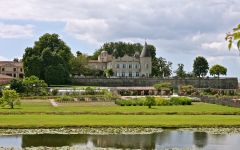

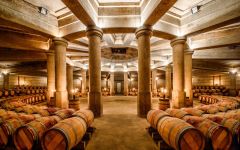
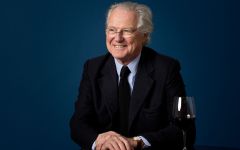
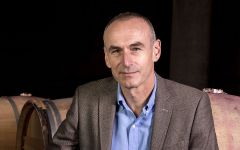
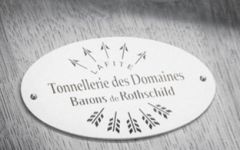
Chateau Lafite Rothschild is one of only four classified first growths and thus the designation as 1st er Cru. The vintage rankings of the Universal Paris Exposition in 1855 officially gave Lafite the rating as “Leader among fine wines.” While the first known reference to Lafite dates to 1234 with a certain Gombaud de Lafite, abbot of the Vertheuil Monastery north of Pauillac, Lafite’s mention as a medieval fief dates to the 14th century. The name Lafite comes from the Gascon language term “la hite”, which means “hillock”. There were probably already vineyards on the property at the time when the Ségur family organised the vineyard in the 17th century, and Lafite began to earn its reputation as a great winemaking estate. Jacques de Ségur was credited with the planting of the Lafite vineyard in the 1670s and in the early 1680s. The estate achieved wide popularity in the 1750s when it became the favorite wine of King Louis XV. Thomas Jefferson was also a steadfast customer and even visited the estate. After the 1973-1976 mini-crisis that hit Bordeaux, Baron Eric’s management of the estate made strides forward with a search for excellence and the gradual addition of a new technical team. In 1985 Baron Eric began a tradition of inviting fine-arts photographers to photograph Chateau Lafite. Today, his daughter Saskia de Rothschild represents the 6th generation of the family at the head of the winemaking properties.

One of the world’s most classic and popular styles of red wine, Bordeaux-inspired blends have spread from their homeland in France to nearly every corner of the New World. Typically based on either Cabernet Sauvignon or Merlot and supported by Cabernet Franc, Malbec and Petit Verdot, the best of these are densely hued, fragrant, full of fruit and boast a structure that begs for cellar time. Somm Secret—Blends from Bordeaux are generally earthier compared to those from the New World, which tend to be fruit-dominant.

The leader on the Left Bank in number of first growth classified producers within its boundaries, Pauillac has more than any of the other appellations, at three of the five. Chateau Lafite Rothschild and Mouton Rothschild border St. Estephe on its northern end and Chateau Latour is at Pauillac’s southern end, bordering St. Julien.
While the first growths are certainly some of the better producers of the Left Bank, today they often compete with some of the “lower ranked” producers (second, third, fourth, fifth growth) in quality and value. The Left Bank of Bordeaux subscribes to an arguably outdated method of classification that goes back to 1855. The finest chateaux in that year were judged on the basis of reputation and trading price; changes in rank since then have been miniscule at best. Today producers such as Chateau Pontet-Canet, Chateau Grand Puy-Lacoste, Chateau Lynch-Bages, among others (all fifth growth) offer some of the most outstanding wines in all of Bordeaux.
Defining characteristics of fine wines from Pauillac (i.e. Cabernet-based Bordeaux Blends) include inky and juicy blackcurrant, cedar or cigar box and plush or chalky tannins.
Layers of gravel in the Pauillac region are key to its wines’ character and quality. The layers offer excellent drainage in the relatively flat topography of the region allowing water to run off into “jalles” or streams, which subsequently flow off into the Gironde.
